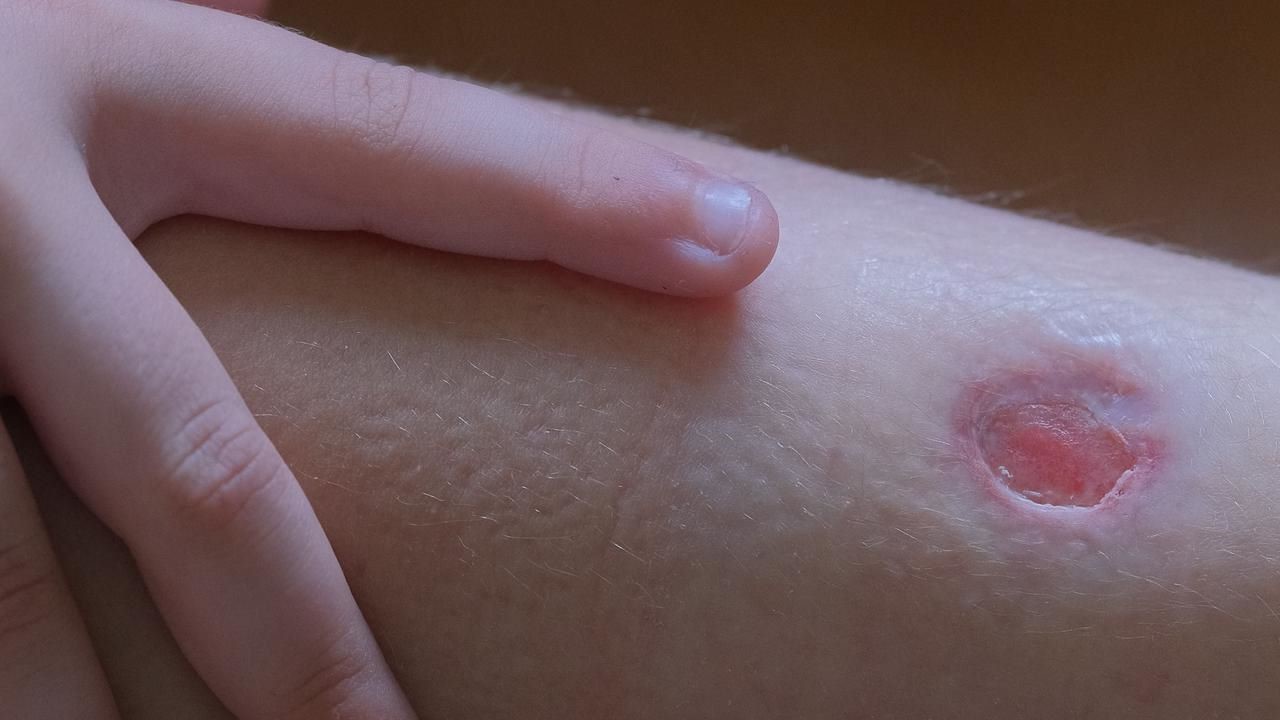
Buruli ulcer is a mysterious and often overlooked disease caused by the bacterium Mycobacterium ulcerans. This infection leads to severe skin ulcers, primarily affecting people in tropical and subtropical regions. Buruli ulcer can cause significant physical and emotional distress, especially if left untreated. The disease spreads through contact with contaminated water or soil, but the exact mode of transmission remains unclear. Early detection and treatment are crucial to prevent long-term complications. This blog post will share 40 intriguing facts about Buruli ulcer, shedding light on its symptoms, treatment options, and preventive measures. Get ready to learn more about this enigmatic disease and how it impacts communities worldwide.
Key Takeaways:
- Buruli ulcer is a chronic skin disease caused by a bacterium. It's named after Buruli County in Uganda and primarily affects tropical regions. Early diagnosis and treatment are crucial for effective management.
- Prevention involves avoiding stagnant water and wearing protective clothing. Community education and improved access to healthcare are vital. Research and international collaborations are key to addressing the global burden of Buruli ulcer.
What is Buruli Ulcer?
Buruli ulcer is a chronic, debilitating skin disease caused by the bacterium Mycobacterium ulcerans. It primarily affects the skin and sometimes the bone. Here are some intriguing facts about this disease.
-
Buruli ulcer is named after Buruli County in Uganda, where many cases were first reported.
-
The disease is caused by a toxin called mycolactone, which destroys tissue and suppresses the immune system.
-
Buruli ulcer is the third most common mycobacterial disease in humans, after tuberculosis and leprosy.
-
The exact mode of transmission is still unknown, but it is believed to be associated with aquatic environments.
-
The disease is most prevalent in tropical and subtropical regions, particularly in West and Central Africa.
Symptoms and Diagnosis
Understanding the symptoms and how Buruli ulcer is diagnosed can help in early detection and treatment.
-
Initial symptoms include a painless nodule or swelling, which can develop into large ulcers.
-
The ulcers can be extensive, covering large areas of the body, and can lead to severe scarring and disability.
-
Diagnosis is often confirmed through laboratory tests, including PCR (polymerase chain reaction) and microscopy.
-
Early diagnosis is crucial for effective treatment, as advanced cases can be more challenging to manage.
-
In some cases, Buruli ulcer can affect bones, leading to osteomyelitis, a severe bone infection.
Treatment and Management
Treatment options for Buruli ulcer have evolved over the years, improving outcomes for many patients.
-
Antibiotic therapy is the primary treatment, usually involving a combination of rifampicin and clarithromycin.
-
Surgical intervention may be necessary to remove dead tissue and promote healing.
-
Wound care is essential, including regular cleaning and dressing of ulcers to prevent secondary infections.
-
Physical therapy can help restore mobility and function in affected limbs.
-
Early treatment can prevent severe complications, including permanent disability and disfigurement.
Prevention and Control
Preventing Buruli ulcer involves understanding its risk factors and implementing control measures.
-
Avoiding contact with stagnant water may reduce the risk of infection.
-
Wearing protective clothing can help prevent skin injuries that may become infected.
-
Community education is vital, raising awareness about the disease and its symptoms.
-
Improving access to healthcare can ensure early diagnosis and treatment.
-
Research is ongoing to develop a vaccine, which could significantly reduce the incidence of Buruli ulcer.
Global Impact
Buruli ulcer affects thousands of people worldwide, with significant social and economic implications.
-
The World Health Organization (WHO) has recognized Buruli ulcer as a neglected tropical disease, highlighting the need for increased attention and resources.
-
Buruli ulcer primarily affects poor, rural communities, where access to healthcare is limited.
-
The disease can lead to significant economic burden, due to medical costs and loss of productivity.
-
Efforts to control Buruli ulcer are often hampered by limited funding and resources.
-
International collaborations are essential to address the global burden of Buruli ulcer.
Research and Future Directions
Ongoing research aims to better understand Buruli ulcer and develop more effective treatments and prevention strategies.
-
Scientists are studying the ecology of Mycobacterium ulcerans to understand how it survives and spreads in the environment.
-
Genetic research is helping to identify potential targets for new treatments.
-
Clinical trials are underway to test new antibiotics and treatment regimens.
-
Researchers are exploring the role of the immune system in controlling the infection.
-
Innovative diagnostic tools are being developed to improve early detection of Buruli ulcer.
Personal Stories and Awareness
Personal stories highlight the human impact of Buruli ulcer and the importance of raising awareness.
-
Many patients face social stigma and discrimination due to the visible scars and disabilities caused by the disease.
-
Community support groups can provide emotional and practical support for patients and their families.
-
Public awareness campaigns can help reduce stigma and encourage people to seek treatment early.
-
Patient advocacy is crucial to ensure that the needs of those affected by Buruli ulcer are addressed.
-
Sharing personal stories can inspire action and support for Buruli ulcer control efforts.
Challenges and Opportunities
Addressing Buruli ulcer presents both challenges and opportunities for global health.
-
Limited awareness and understanding of the disease can hinder control efforts.
-
Access to healthcare remains a significant barrier for many affected communities.
-
There is a need for more research funding to develop better treatments and prevention strategies.
-
Collaboration between governments, NGOs, and researchers is essential to tackle Buruli ulcer effectively.
-
Innovative approaches and technologies offer new opportunities to improve diagnosis, treatment, and prevention of Buruli ulcer.
Final Thoughts on Buruli Ulcer
Buruli ulcer, a neglected tropical disease, affects thousands worldwide, especially in rural areas. Caused by Mycobacterium ulcerans, it leads to severe skin damage and disability if untreated. Early detection and treatment are crucial for better outcomes. Antibiotics like rifampicin and streptomycin can effectively treat it, but access to healthcare remains a challenge in many affected regions.
Raising awareness about Buruli ulcer is vital. Communities need education on recognizing symptoms and seeking prompt medical help. Support for research and healthcare infrastructure can make a significant difference. By understanding the impact of Buruli ulcer and advocating for better resources, we can help reduce its burden on vulnerable populations.
Stay informed, spread the word, and support efforts to combat this debilitating disease. Together, we can make a difference in the fight against Buruli ulcer.
Frequently Asked Questions
Was this page helpful?
Our commitment to delivering trustworthy and engaging content is at the heart of what we do. Each fact on our site is contributed by real users like you, bringing a wealth of diverse insights and information. To ensure the highest standards of accuracy and reliability, our dedicated editors meticulously review each submission. This process guarantees that the facts we share are not only fascinating but also credible. Trust in our commitment to quality and authenticity as you explore and learn with us.


